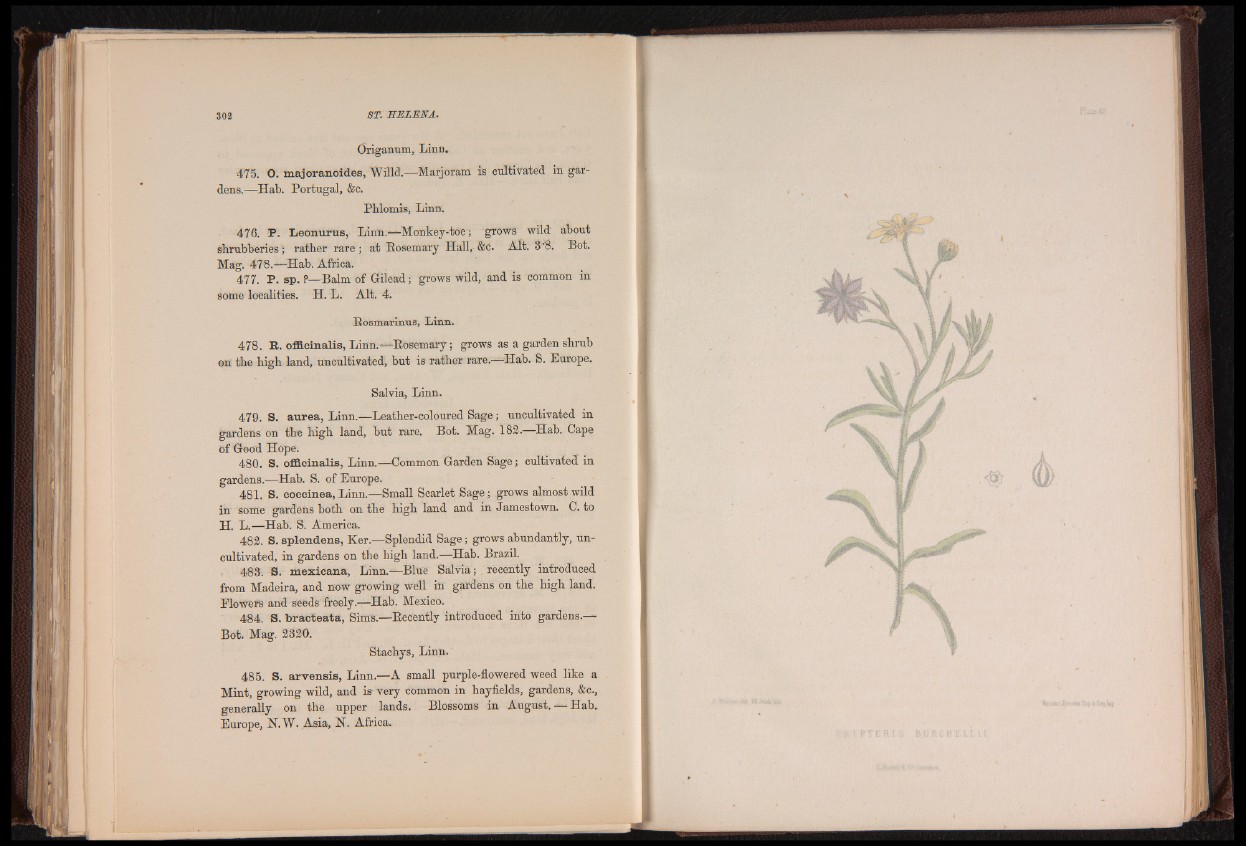
Origanum, Linn.
475. O. majoranoid.es, "Willd.—Marjoram is cultivated in gardens.—
Hab. Portugal, &c.
Phlomis, Linn.
476. P. Leonurus, Linn.—Monkey-toe; grows wild about
sh ru b b e rie s ra th e r rare ; at Bosemary Hall, &e. Alt. 3 '8. Bot.
Mag. 478.—Hab. Africa.
477. P. sp. P—Balm of Gilead ; grows wild, and is common in
some localities. H. L. Alt. 4.
Bosmarinus, Linn.
478. E. officinalis, Linn.—Eosemary; grows as a garden shrub
en the high land, uncultivated, but is rather rare.—Hab. S. Europe.
Salvia, Linn.
479. S. aurea, Linn.—Leather-coloured Sage; uncultivated in
gardens on the high land, but rare. Bot. Mag. 182.—Hab. Cape
bf Good Hope.
480. S. officinalis, Linn.—Common Garden Sage; cultivated in
gardens.^t-Hab. S. of Europe.
481. S. coccinea, Linn.—Small Scarlet Sage; grows almost wild
in some gardens both on the high land and in Jamestown. C. to
H. L.—Hab. S. America.
482. S. splendens, Ker.—Splendid Sage. grows abundantly, uncultivated,
in gardens on the high land.—Hab. Brazil.
483. S. mexicana, Linn.-—Blue Salvia; recently introduced
from Madeira, and now growing well in gardens on the high land.
Flowers and seeds freely.—Hab. Mexico. _
484. S. bracteata, Sims.—Recently introduced into gardens.—
Bot. Mag. 2320.
Stachys, Linn.
485. S. arvensis, Linn.—A small purple-flowered weed like a
Mint, growing wild, and is very common in hayfields, gardens, &c.,
generally on the upper lands. Blossoms in August. — Hab.
Europe, N.W. Asia, N. Africa.